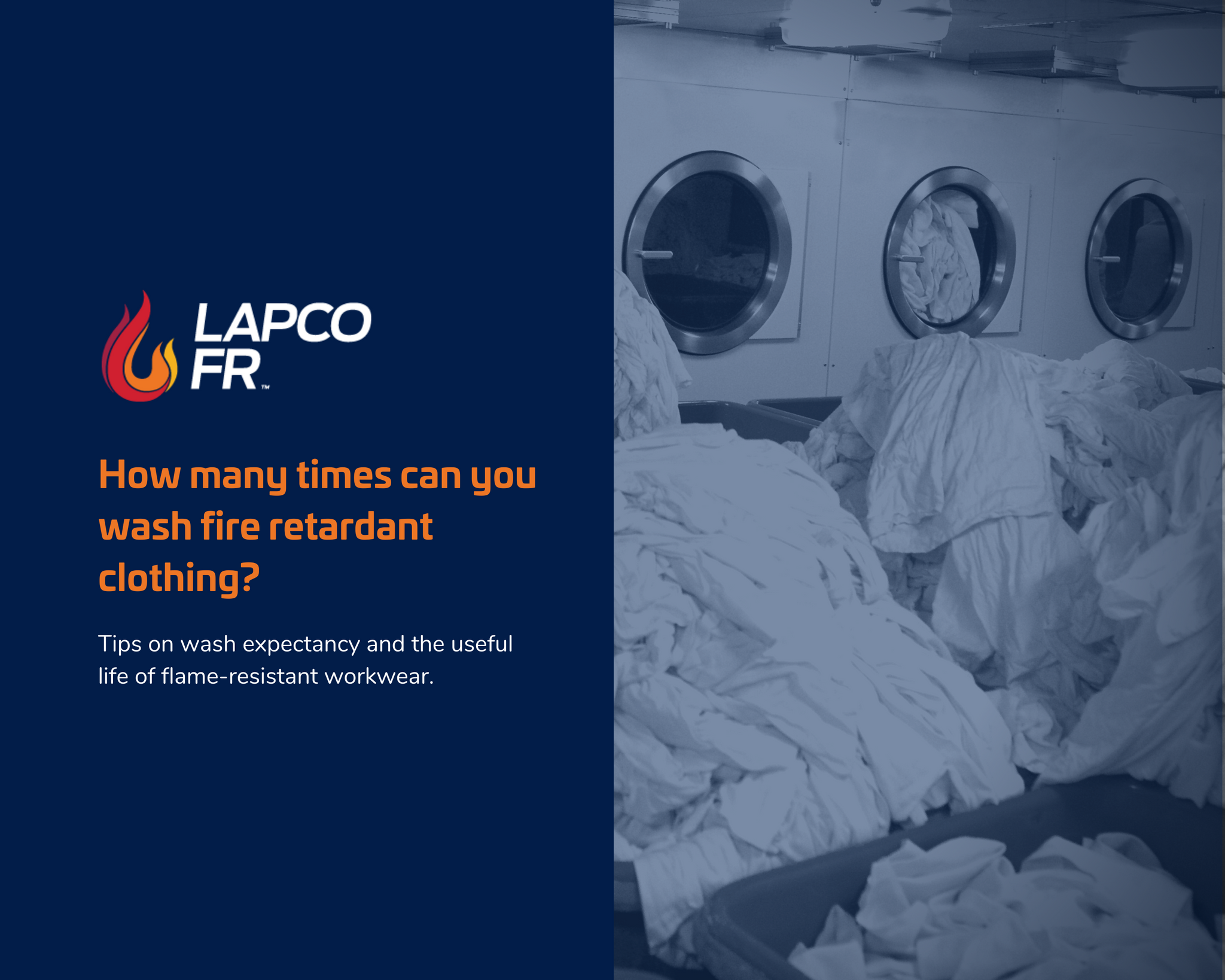Tips on wash expectancy and the useful life of flame-resistant workwear.
When considering laundering & the useful life of FR clothing, a few factors affect the life expectancy of a garment:
- Type of work and duties of the wearer
- Fabric content
- How many sets of uniforms are issued to each employee
- Type of laundering and whether garments are laundered correctly
Fabric Content
Consider fabric content when assessing wash expectancy and workwear durability. When garments are laundered correctly and each employee has five (5) sets:
- FR 100% Cotton can last approximately 12 to 16 months
- FR 88/12 Cotton-Nylon Blends can last approximately 18 to 30 months
- FR Synthetic Blends can last anywhere from approximately 2-1/2 to 4 years
Industrial Laundering Program Example
Companies that utilize an Industrial Laundry generally use 11 garments/sets of garments for every employee. This allows each piece to be laundered only 25 times per year with each set being worn approximately every other week. Garments in an industrial laundering program situation will last much longer because of the small yearly number of launderings.
Home Laundering Examples
However, if a company uses the general rule of thumb, which is five (5) sets of uniforms per employee, the employee is laundering them weekly, which doubles laundering to 50-52 times per year.
There are also companies that issue three (3) sets of uniforms per employee, which means they are laundered 70-75 times per year. Garments in this circumstance will wear out far more quickly.
Did you know?
When fabrics are tested for NFPA 2112 certification, the test performed to establish the flame resistance of the fabric is ASTM D 6413– Test Method for Flame Resistance of Textiles (Vertical Test). This test is conducted before and after 100 launderings/dry cleanings. The fabric must pass all requirements after the 100 wash cycles to earn the certification.

